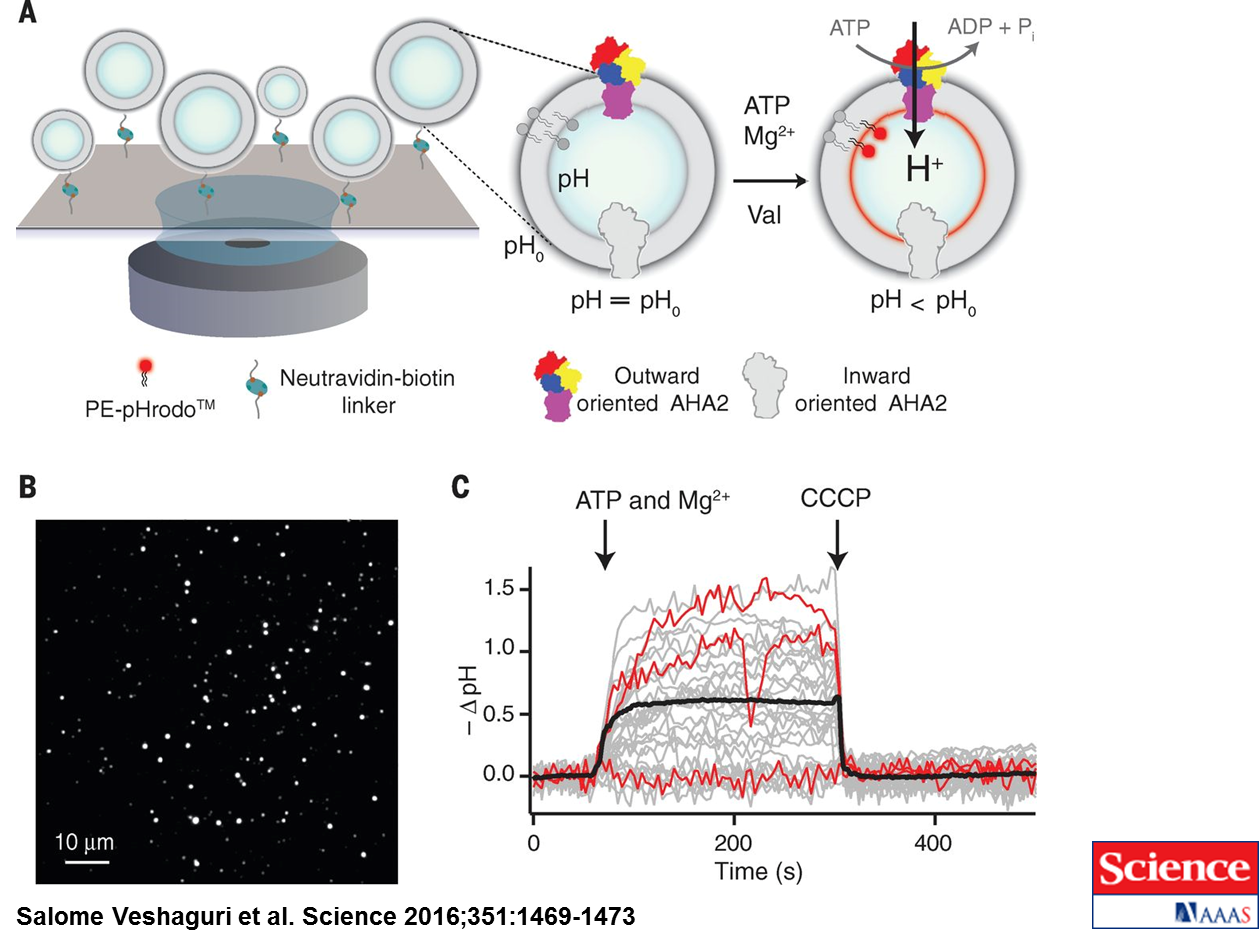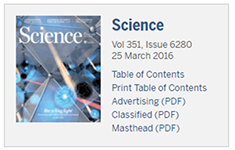Direct observation of proton pumping by a eukaryotic P-type ATPase
All cells protect themselves from the surrounding environment by the aid of thin but mega strong membranes. To let the useful molecules pass through the membrane (e.g. nutrients) the cell uses a "doorman molecule" called a transporter. Researchers at the Nano-Science Center at University of Copenhagen have now found out that these transporters can be forced to work overtime by turning them on constitutively. This represents a fundamental contribution to our understanding of cells and may have important implications in the healing of multitudes of diseases related to these transporter molecules, including depression, Alzheimer's, diabetes, obesity, and cancer, just to name a few.
 The crossdiciplinary group with several researchers from Center for Synthetic Biology lead by Prof. Dimitrios Stamou has made this apparently general discovery about the switches on the transporters in our bodies and their results are published in the latest issue of Science.
The crossdiciplinary group with several researchers from Center for Synthetic Biology lead by Prof. Dimitrios Stamou has made this apparently general discovery about the switches on the transporters in our bodies and their results are published in the latest issue of Science.
"If it turns out that many other transporters can be turned on the same way as the ones we have studied, it widens our understading and maybe cure for several diseases.
Prof. Dimitrios Stamou
The discovery of the switch is in contracts to the previous beliefs that the transporters work continiuosly. Through studies of the proton transporter in this project the researchers now know that trasnporters operate very limited naturally but by turning the switch on, the trasnporter can work twice as much.

Imaging proton pumping into the lumen of single surface-tethered vesicles using TIRF microscopy
The paper:
Direct observation of proton pumping by a eukaryotic P-type ATPase. Salome Veshaguri, Sune M. Christensen, Gerdi C. Kemmer, Garima Ghale, Mads P. Møller, Christina Lohr, Andreas L. Christensen, Bo H. Justesen, Ida L. Jørgensen, Jürgen Schiller, Nikos S. Hatzakis, Michael Grabe, Thomas Günther-Pomorski, Dimitrios Stamou. Science 25 Mar 2016: Vol. 351, Issue 6280, pp. 1469-1473 DOI: 10.1126/science.aad6429
Link to full press story (in Danish) here ...>
Related News
Contact
Professor Dimitrios Stamou
stamou@nano.ku.dk
mobil: 24 98 16 58

